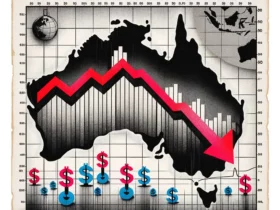Bottled and jarred packaged goods have been around for a long time. Canisters made of glass date back to Ancient Egypt. For a few years, bottle production was slow. After 1900, the situation drastically changed. The first bottle-making machine was also invented about this period. As a result, vast amounts of bottled and jarred packaged goods were produced.
Glass canisters with airtight lids are used for storing home chemicals. Plastic bags and bottles are now competing with Bottled, pots, and jarred. Despite the competition, bottles remain extremely popular. Today’s food jarred come in a variety of shapes and sizes. The design of the package is usually determined by the product packing.
The primary purpose of packaging is to protect food products. Packaging has evolved to serve additional uses as well, resulting in long-term benefits for both customers and businesses. The most common packaging options are glass canisters with lids and cans with lids. Foil pouches are another popular choice. Every style of food packing has advantages and disadvantages.
Jars and Bottles for Packaging:
Before purchasing drinks or food, it is critical to learn the specifics of each item.
It’s also crucial to know how durable the bottles and cans are. Bottled and jarred items are packaged goods.
Food keeps protect from the sun and other environmental factors by packaging. Fish meats, vegetable juices, milk, and pickles, among other items, are packed in these jarred.
Food-packing bottles and jars come in a variety of shapes and sizes.
Bottles made of plastic
On the market, this is the most common type of packaging. Plastic bottles and jarred foodstuffs are the most typical items discovere in trash cans. It can take up to 1,000 years for packaging to disintegrate.
Another issue is that plastic bottles are difficult to recycle. They frequently lose quality after being recycled. Plastic bottles can also be dispose of in landfills, resulting in chemical dispersion into the soil and groundwater. Plastic bottles are one of the most environmentally hazardous items.
These petroleum-based bottles are used to package drinks and other products. They can’t be recycle, hence they aren’t recyclable.
Cardboard-Based Packaging:
Bottled and jarred packaged items made of cardboard are not only less expensive, but they are also better for the environment. They’re also a great alternative to metals like aluminium, tinplate, and plastic. It is cost-effective, making it a desirable option for corporations. It’s simple to transport, store, and reuse. Bottled and jarred items are packaged goods.
Canisters made of glass
Because glass canisters are recyclable and renewable, they are an excellent choice. They come in square shapes and a variety of sizes, shapes, and thicknesses. Glass canisters with airtight lids have numerous advantages. It inhibits the growth of microorganisms. Acomplishing a lot more than that. It also keeps dangerous compounds from being emitt and frozen in the microwave. Food is store in Bottled and canisters. This aids in the prevention of food contamination and dissemination.
Metal Jarred
Metal jarred are well-known in the food business because they can use for food storage. They are compose of zinc-plated steel. This makes them both cost-effective and corrosion-resistant. Acidic foods do not cause them to react.
Bottles and Jars of Various Shapes and Sizes:
There are many different sorts of bottled and packaged foods to choose from. Glass is one of them.
The most prevalent material used to package bottles and jarred packaged products is glass. Almost every producer uses Bottled to package food and other things. The mouths of Bottled can be made smaller or larger.
Victorian
Victorian jarred are the most durable jarred on the market. Pickles, mayonnaise, and other foods can be stored in these jarred. Bottled and jarred goods are examples of packaged items.
Paragon
This container can hold olives, gas, and other items. The exterior of the paragon container can be recognize. It not only serves as a practical storage solution for your belongings, but it also looks wonderful.
The Benefits and Drawbacks of Bottled And Jarred Packaged Goods:
Hygiene:
When it comes to packaging items, hygiene is the most crucial consideration. Packaging materials require a high level of hygiene. Because Bottled and jarred do not release dangerous radiation, they are excellent candidates. Oxidation has no effect on the contents. You can heat-hermetically compress glass jar contents to keep them from spoiling.
It’s crucial to keep in mind that packaging can differ from one product to the next. Glass packaging that works well with glass may not work well with aluminium or steel packaging.
Time:
In packaging, the entire supply chain plays a vital role. Food and beverage safety necessitates the use of packaging.
It also has an impact on the shelf life of many products. Foods might have a longer shelf life if they are packaged properly.
Cost-Efficient
Because jar packaging takes up less room than canned food, it is more efficient. They are also less expensive. Soup or stew can be purchase and store in the kitchen. Using jars or bottles, you may also manage how the items are manufacture. The glass pot, for example, is more sturdy and can endure longer than cardboard packing. It is better because food is wrapp in practical packaging.
Disadvantages:
Packaging is fragile
While bottles and jars are practical and appealing, they may also be delicate. Because glass bottles and jars are comprised of glass, they are easily broken. Fragile glass bottles and jars are difficult to transport.
Expensive:
Because glass is such a delicate substance, it is prohibitively expensive. Glass packaging is frequently more costly than other materials.
Environment:
Our surroundings have a vital role in our life. Food, water, and air are all provided by the environment in our daily existence. Taking care of our environment is our obligation. Consumer packaged goods produce a significant quantity of waste. When packing materials are dispose of in landfills, they harm the environment.
Why are consumers more likely to prefer Bottled And Jarred products?
Bottle or jarred-packed packaged items appeal to consumers for a variety of reasons. This includes the following:
- Unlike plastic bottles, jarred do not discharge toxic chemicals into the water they contain.
- Glass is a recyclable material. It can be recycle endlessly without losing any of its original properties.
- Microwave glass jarred can use to cook.
- Glass jarred food products can be frozen without chemicals penetrating the contents.
- Glass-jarred products are more environmentally friendly because they can be recycled and reused.
- To prevent food from leaking, glass jarred with lids have sealed edges.
- Food kept in Bottled lasts longer than food kept in cans. There are no metals in glass that could leach into food as it ages.







